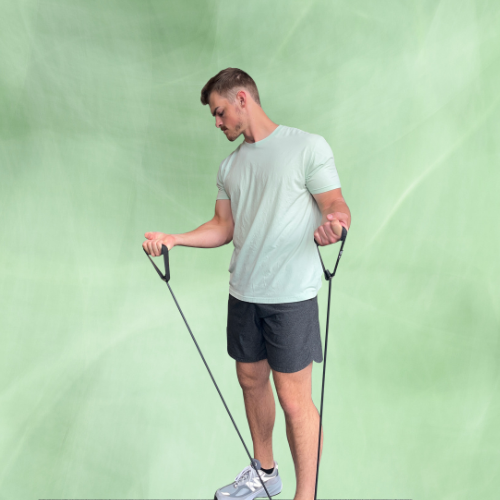
Some Tips I Follow for Keeping my Shoulder Healthy - Former Division 1 Pitcher
As a former Division 1 pitcher, I know firsthand how important it is to take care of your arm and shoulder — not just during your playing years, but long after. Throwing thousands of pitches over time takes a toll, and if you're not proactive about shoulder health, it can easily lead to long-term issues.
Even though I'm no longer competing, I still make it a priority to maintain my shoulder health. One of the simplest and most effective tools I use today is a resistance band.
Why I Focus on the Rotator Cuff
Before every workout, I go through a short series of rotator cuff exercises using resistance bands. This isn’t optional for me — it's essential. Doing these exercises before lifting weights or playing catch reduces my risk of injury tremendously. I’ve learned that shoulder problems often start small, but if you don’t stay ahead of them, they can quickly become chronic.
Rotator cuff muscles are small, stabilizing muscles that support the shoulder joint. They’re often overlooked until it’s too late. By using bands to perform external rotations, internal rotations, and other slow moving isolation exercises, I can warm up the joint, activate the right muscles, and train with confidence.
Shoulder Injuries Don’t Just Go Away
One thing I’ve realized over the years is that many shoulder injuries don’t just “heal and disappear.” They require ongoing maintenance. Even after you’ve rehabbed an injury, there’s usually a lingering weakness or imbalance that needs attention. The worst thing you can do is wait until it flares up again.
That’s why I’ve made shoulder care a part of my routine, not just something I do when I’m hurt.
It’s Not Just for Athletes
You don’t need to be a pitcher or athlete to benefit from shoulder prehab. Whether you’re lifting groceries, working at a desk, or reaching overhead in everyday life — your shoulder is involved in more than you think. While playing youth baseball, I would hear stories from dads that it was painful for them to lift their child and that made an imprint on how I decided to take care of my body. Most people don’t realize how much they use their shoulder until they’re limited by pain or stiffness.
Taking 5–10 minutes a few days a week to strengthen and stabilize your shoulders with a resistance band can make a huge difference in how you feel — and how long you stay active.
What I Use
I use bands from my own brand, TAME (Therapy and Activity Made Easy), because they’re simple, padded, and built for real-life therapy and training. I created them to make tools like these more accessible for people who actually care about their long-term health.
Final Thoughts:
You don’t need fancy equipment to take care of your shoulder — just some simple equipment and a consistent plan. Trust me, your future self will thank you.
If you’re dealing with shoulder tightness, previous injuries, or just want to stay ahead of problems, I encourage you to add band work to your routine. It may only add 10 minutes to your routine but it will provide a huge return.



